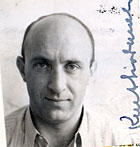Edith Wharton Quotes - Page 3

Edith Wharton (2013). “Delphi Complete Works of Edith Wharton (Illustrated)”, p.2005, Delphi Classics
Edith Wharton (2014). “The Writing of Fiction”, p.55, Simon and Schuster
Edith Wharton (2013). “Delphi Works of Edith Wharton (Illustrated)”, p.1992, Delphi Classics
Edith Wharton (2016). “The House of Mirth: Edith Wharton”, p.145, VM eBooks
Edith Wharton (2008). “The House of Mirth (EasyRead Large Bold Edition)”, p.379, ReadHowYouWant.com
Edith Wharton (2011). “The New York Stories of Edith Wharton”, p.119, New York Review of Books
Edith Wharton (2013). “Collected Works of Edith Wharton”, p.3355, e-artnow sro
Edith Wharton (2015). “The Age of Innocence”, p.299, Booklassic
Edith Wharton (2006). “Summer”, p.3, Courier Corporation
Edith Wharton (2013). “Delphi Complete Works of Edith Wharton (Illustrated)”, p.2933, Delphi Classics
Edith Wharton (2011). “The Custom of the Country (鄉土風俗)”, p.1083, Hyweb Technology Co. Ltd.
Edith Wharton (2016). “A Backward Glance”, p.4, Edith Wharton
Edith Wharton (2013). “Delphi Works of Edith Wharton (Illustrated)”, p.2268, Delphi Classics
Edith Wharton (2013). “Delphi Complete Works of Edith Wharton (Illustrated)”, p.7523, Delphi Classics
Edith Wharton (2010). “The Age of Innocence”, p.174, Bibliolis Books
Edith Wharton, Barbara Anne White (1995). “Wharton's New England: Seven Stories and Ethan Frome”, p.152, UPNE
Edith Wharton (2013). “House of Mirth and the Age of Innocence”, p.28, Simon and Schuster
Society soon grows used to any state of things which is imposed upon it without explanation.
Edith Wharton (2008). “Old New York”, p.227, Simon and Schuster
Edith Wharton (2016). “The Touchstone: American Literature”, p.36, VM eBooks






